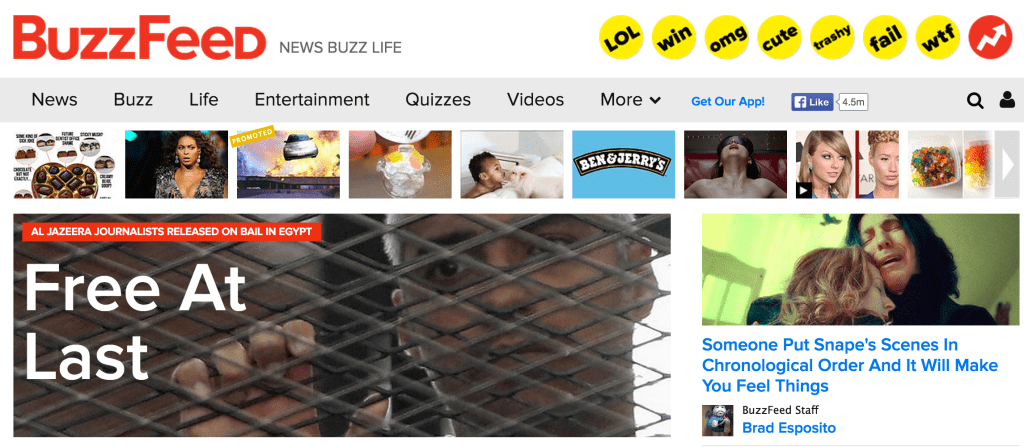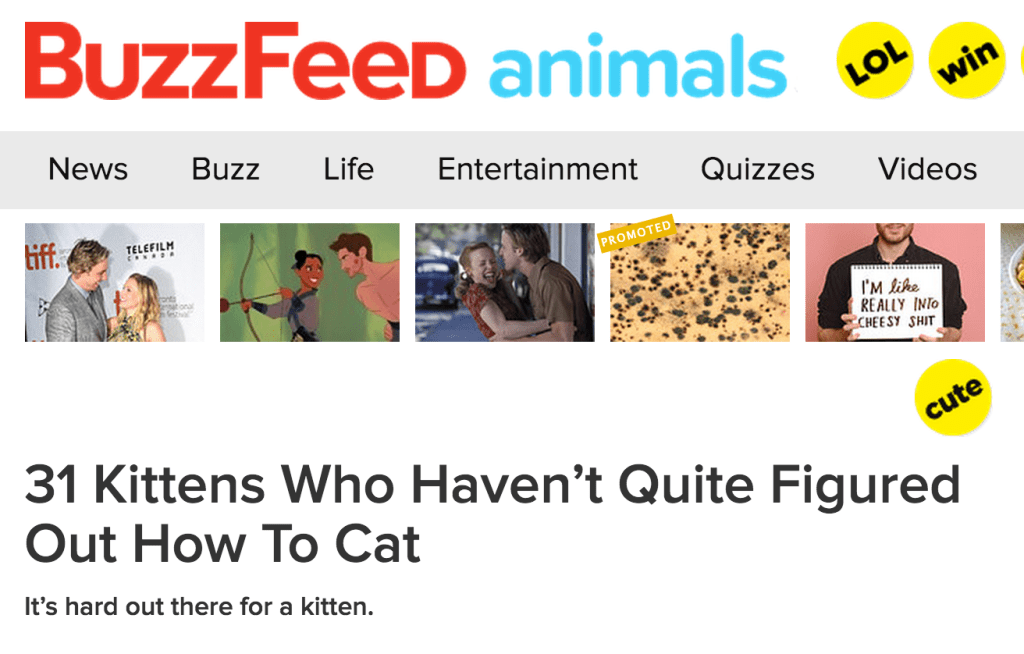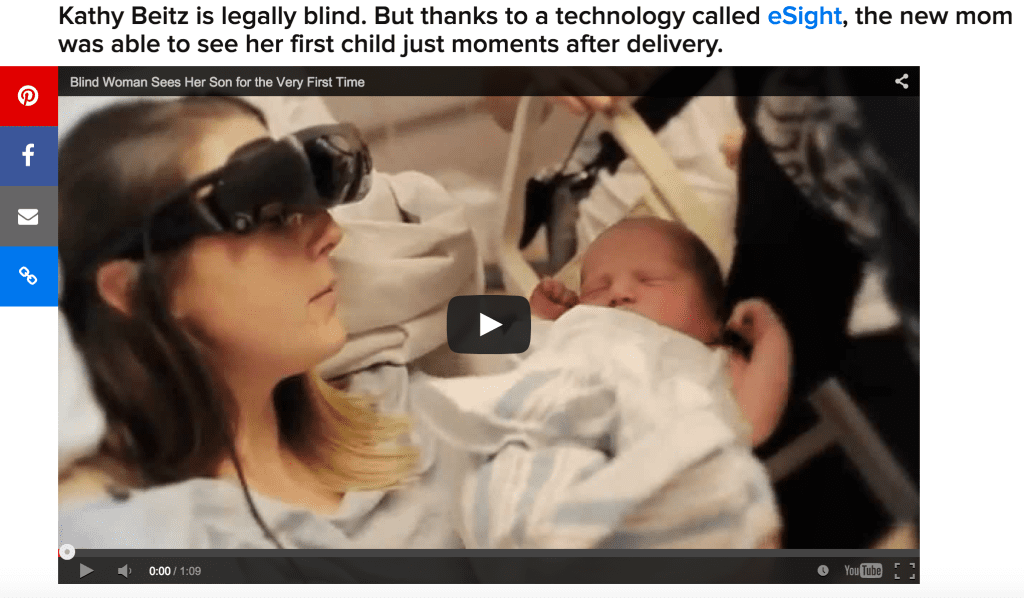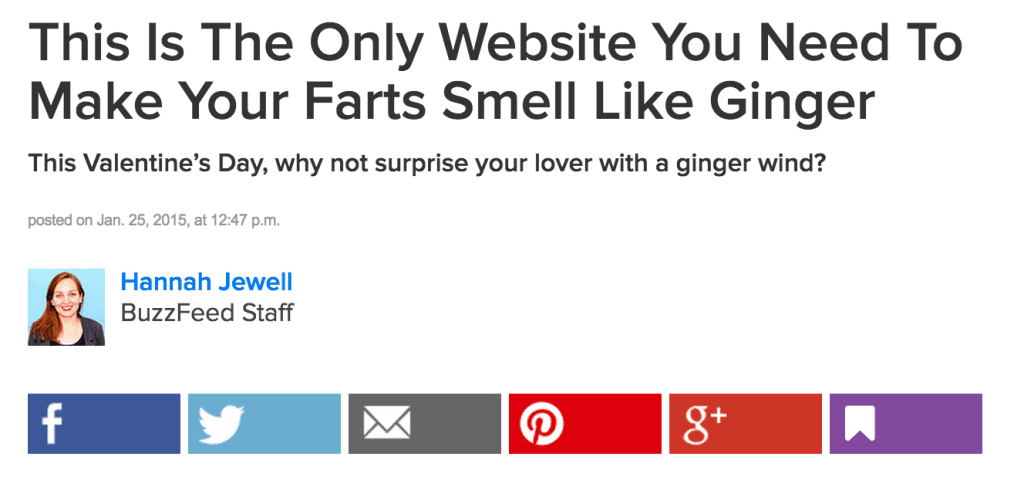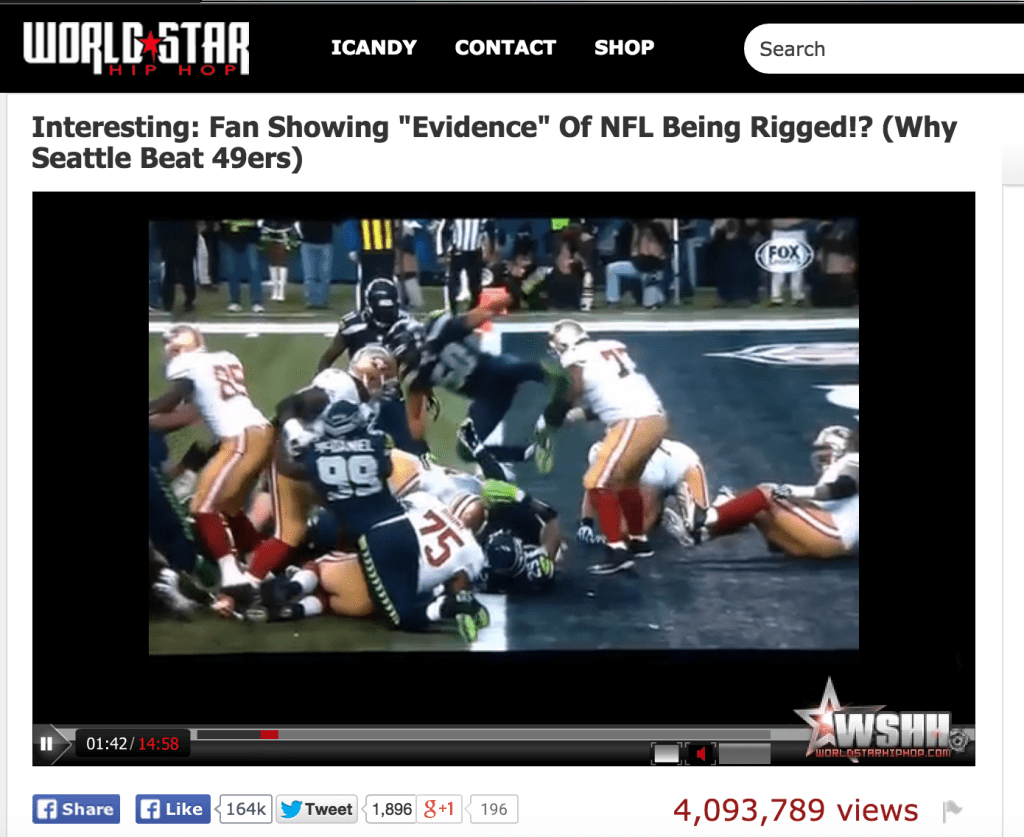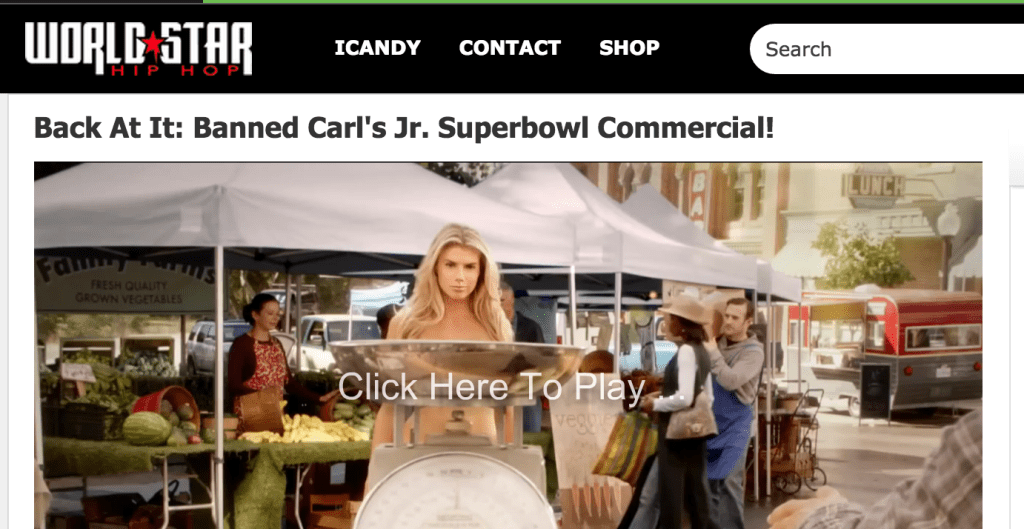We’ve all witnessed the sensation of viral content from titillating celebrity stories to the cutest cat video ever, to Volkswagen’s Darth Vader Super Bowl ad. We’ve seen the results it can drive for brands and we want a taste of it for ourselves.
But, most brands don’t have a solid understanding of what makes content contagious. For marketers, it’s a challenge we face every day.
In fact, most of the early client engagements I have tend to start either start or end with the question, “How can I make our content go viral?” While I wish I could hand off a one-pager with a straight forward scientific formula that would help all my clients achieve instant Internet fame, such a cheat-sheet does not exist.
Creating viral content is part science, part art, and part luck.
It’s not easy but it is possible.
In order to break down the ingredients for content that’s worth sharing, let’s look to BuzzFeed and WorldStar Hip Hop (WSHH) and uncover some key insights about how they drive viral success with their content. Both of these news and entertainment organizations regularly produce content that people all over the world go crazy over.
Now, most people are familiar with BuzzFeed but WorldStar might not be something on your radar.
You might be wondering… Huh? WorldStar? What’s that?
If that’s the case, let me show you why WorldStar should be on the radar:
That’s right.
World Star is an underrated content giant.
So, what can WSHH and Buzzfeed can teach you about marketing? First, let’s get familiar..
WorldStar Hip Hop
WSHH prides itself on being “the number one urban media outlet responsible for breaking the latest premiere music videos, exclusive artist content, entertainment stories, celebrity rumors, sports highlights, interviews, comedy skits, rap freestyles, crazy fights, models, the best viral videos & more.”
To break it down, WSHH is essentially a hub for shock video, which is why it’s so effective. Whether you’re a fan of WSHH or not, you can’t deny the fact they’ve cracked the code to virality.
The site has had its share of criticism for the type of content it features, but if we focus on why this content goes viral we can gain important insight into how marketers can create better content that is positioned for the same success.
BuzzFeed
The site has had its share of criticism for the type of content it features, but if we focus on why this content goes viral we can gain important insight into how marketers can create better content that is positioned for the same success.
BuzzFeed provides shareable breaking news, original reporting, entertainment, and video across the social web to its global audience of more than 200 million users.
BuzzFeed understands the importance of packaging content for social so that it spreads. Their content is formatted and distributed across a variety of mediums and channels. For example, a video might also be used as a quiz, used for social contests, and tagged more than once with different categories based on the audience which it’s targeting. Content on BuzzFeed is posted to their website and shared across social, making it easy for their audience to find, consume and share the content.
Both WSHH and BuzzFeed are masters at delivering epic sharable content. So, how do they do it?
1. Know Your Audience
The first step to creating spreadable content is knowing who you’re creating it for. By understanding the demographics, interests, passions and social environments of your audience, you can deliver content they crave. It’s this insight that is the backbone of why we’re building Crate; a platform that arms content creators with insights around what content is most relevant to their audience.
It’s important that as content creators we dive into our data and use it to create content that will appeal to our audiences. It’s this commitment to data that can reveal that your audience is more interested in articles about 50 Shades of Grey than they are interested in articles about DIY Interior Design. Once you have this information; surprise them with content they didn’t even know they wanted.
This is how you create content worth sharing.
2. Create the right content for your audience
BuzzFeed knows the secret to great content begins with bunnies, kittens, celebrities, Sriracha and cheese. They know what people want to read about and they give it to them.
This might not be your story angle, but there are elements that epic stories require that you can steal from BuzzFeed and WSHH and apply directly to your own content strategy. Your content is more likely to be shared if it helps your readers make a statement about who they are and what they believe.
Evoke the right emotions
A 2010 study of the New York Times “most emailed” list found the articles that made the list tended to fall into one of four categories: awe-inspiring, emotional, positive or surprising.
We call these high-arousal emotions, such as awe, anger, excitement, joy, surprise, or anxiety.
WSHH, does this really well. They know their audience well and deliver content that taps into the emotions of their viewers. The site is well-known for delivering content that evokes shock and awe, surprise, and anger in their viewers. These high-arousal emotions are powerful motivators and drive people to act.
Additionally, positive content goes viral more than negative content – just because we see negativity all around us, doesn’t mean we need to add to it. Positive stories that make people feel good are more likely to be shared, so create those.
Create Content That Delivers Value (Educate, Engage or Entertain)
Give your audience something they can use. Help them solve a problem, offer the answer to a question you know they’ve been racking their brains for, give them something to laugh at, inspire them to be the best version of themselves, and whatever you do – close with a call to action.
This is key to creating viral content – tell your readers to share it. They will. Finish your article, blog post, or social post with a call to action. Sounds pretty lame, but trust me, it works.
If you create content that will help improve your readers’ lives or will help out their family and friends, they will share it. So make it easy by telling them what the next steps are and what you want them to do.
Create Content With Compelling Characters
Everyone hates bad guys and bullies, but every story needs a villain and a hero.
When we experience a story, we naturally want to root for someone to win. Make this easy for your audience by including the right characters in your story that allow us to latch on to a character and invest our emotions into the experience. When your audience is invested in this way, and satisfied at the end, they’re much more likely to share your content with others.
3. Inject Your Content With Psychological Triggers
Optimize your content to be click-worthy. It doesn’t matter how good your content is, if you don’t make it compelling enough to click on, nobody will see it and nobody will share it.
It all begins with a stellar headline:
Create a curiosity gap
Avoid creating headlines that are too vague or too specific. The most successful headlines are those that create a curiosity gap. It should instil curiosity in your audience by implying that there is a gap in one’s knowledge by challenging what the reader thinks they know and offering something they don’t.
Use visuals that catch attention
Content with a great image is more likely to be shared than those without. Going forward, include a share image with all the content you deliver.
Some examples of a great share image:
- It creates curiosity
- The cutest animal ever!
- Something vs. something else
- A sneak preview of what’s inside the content
4. Make your content easy to share
Facebook is where things go viral.
Create your content with sharing in mind. Make it easy to share and ask people to do it. It should be obvious and easy for people to share your content across many social media sites, especially Facebook.
Include share buttons, a clear call to action and the right share text that will motivate others to click, read, and share again.
5. Test everything, test it again. Don’t stop testing.
A/B test constantly. Test your headlines, test your images, test your share buttons, test it all. And then test it again.
Testing can be as simple and as low-cost as creating two different links for one piece of content, posting it to your Facebook wall with two different headlines, targeting two different cities with similar demographics and population, and timing it. The link with the most clicks wins.
Another easy way to test your content is to use Google and Facebook Analytics to learn about what content people are interacting with the most and then use these insights to improve your approach on an ongoing basis.
Conclusion
These tips are helpful and have certainly proven their worth, driving insane amounts of traffic, engagement, and views for sites like WorldStar Hip Hop and BuzzFeed.
However, we can’t lose sight of the important role luck plays in virality. It’s an unpredictable and scary role, but important nonetheless. So, focus your attention and effort on what you can control; creating epic content that people crave and that people want to share.
Then, when all is said and done, close your eyes, cross your fingers and hope that today is your lucky day!
I’d love to hear from you! What are some of your go-to strategies for creating content that gets shared? Please share some of your tips in the comments, I’m always interested in learning about how others are achieving viral success.

